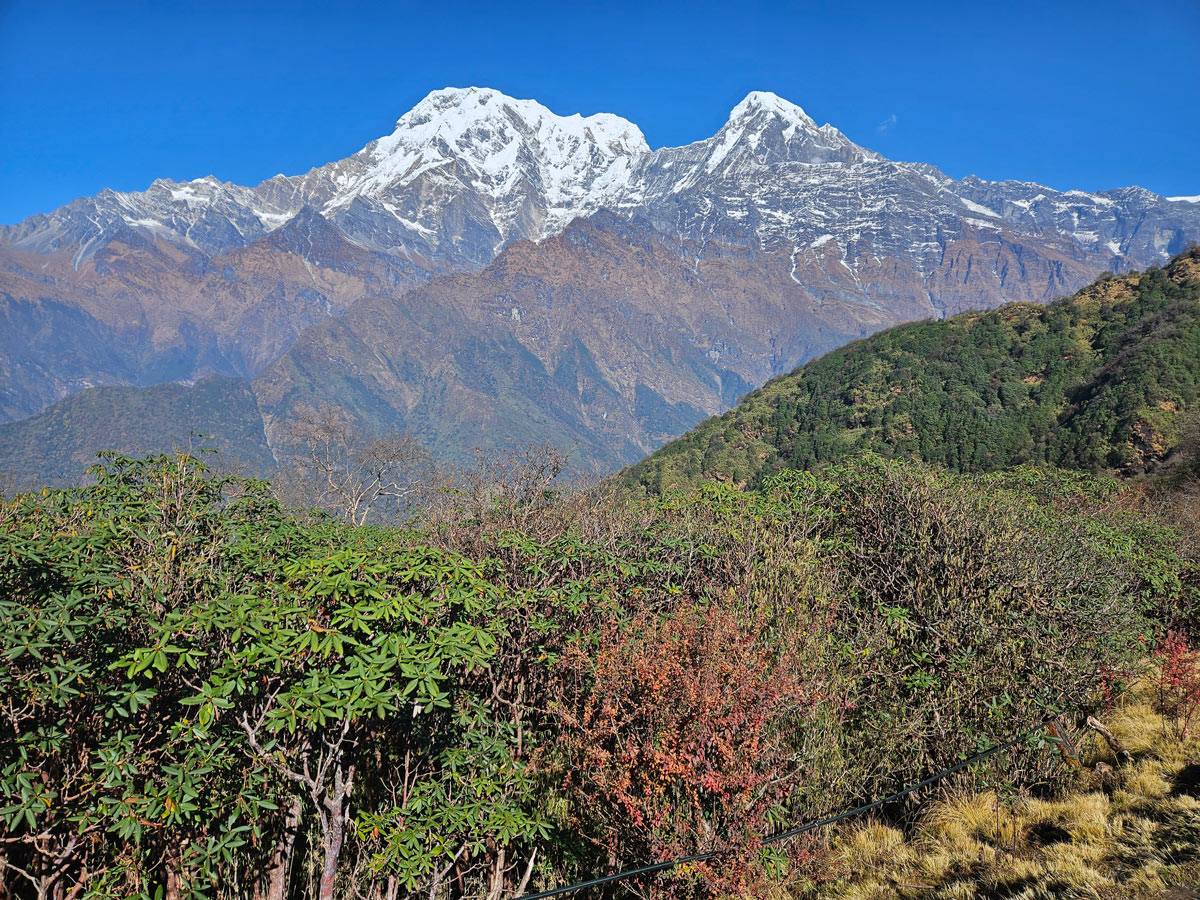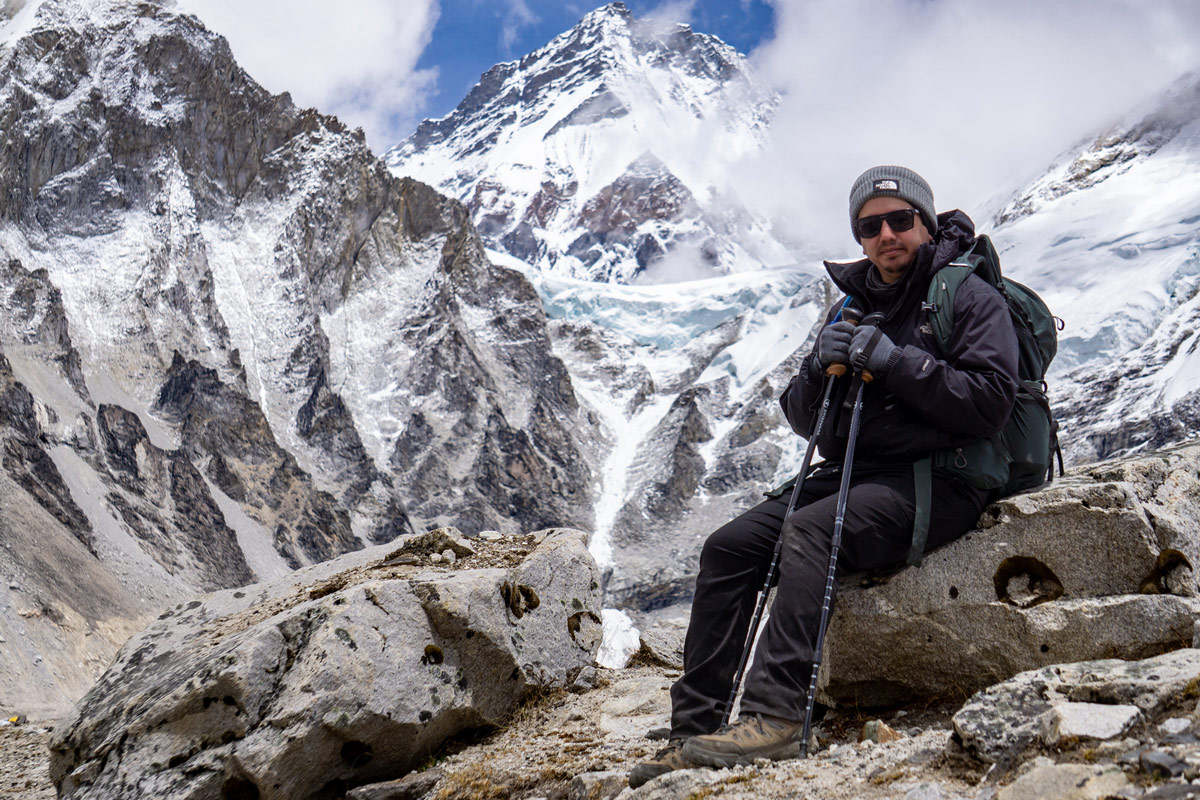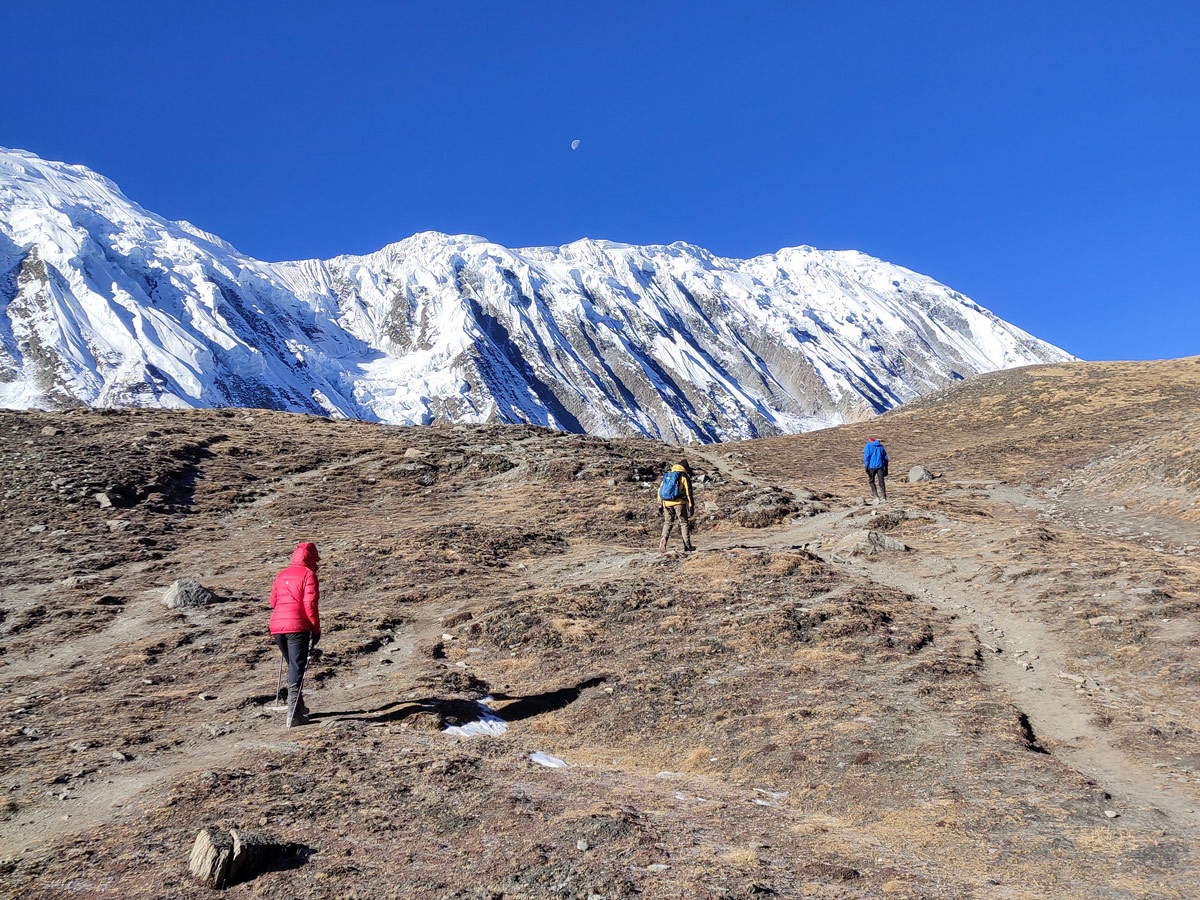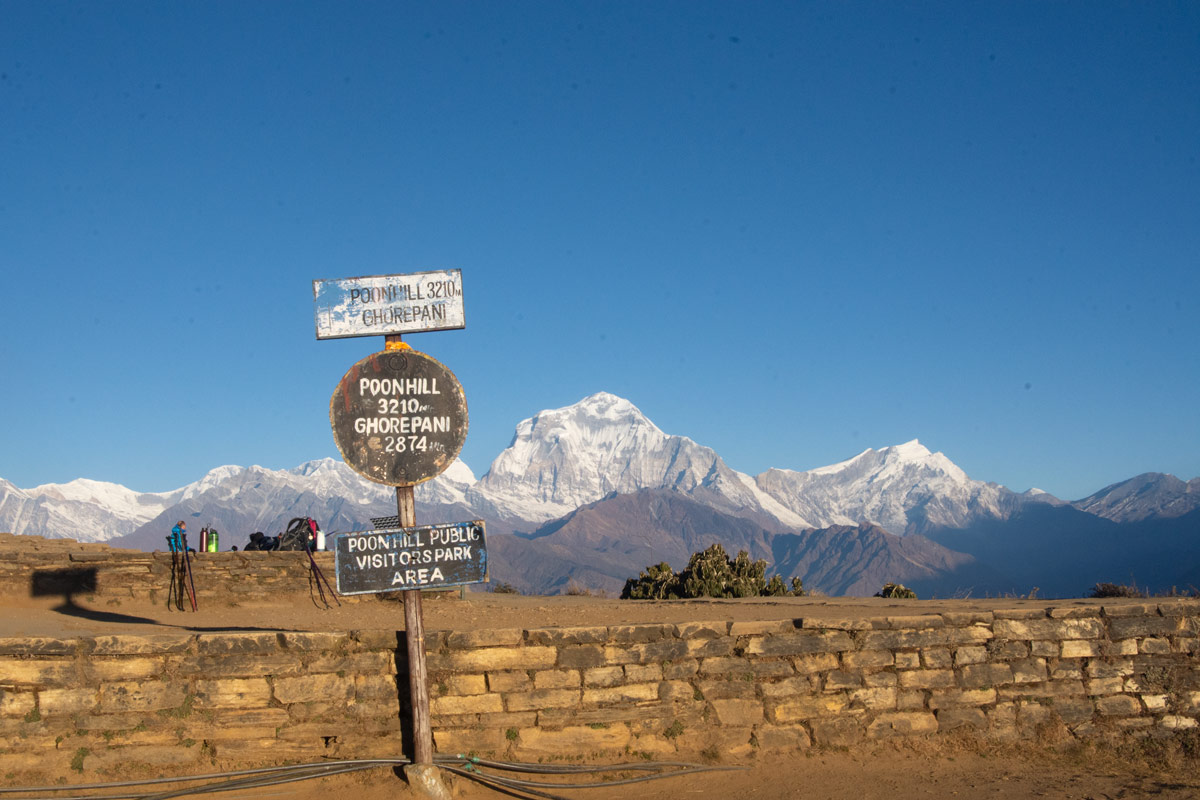Standing amidst the towering Himalayas while being able to witness dramatic yet gorgeous landscapes accompanied by diverse flora and fauna. Sounds too good to be true?
Well, this is the reality that awaits you at the Annapurna Conservation Area nestled in the heart of the Himalayas in Nepal. The region is popularly known as a haven for trekkers worldwide.
However, there is much more to this region beyond trekking. So, let’s explore the true allure of the Annapurna Conservation Area.
Where is the Annapurna Conservation Area?
The Annapurna Conservation Area is located in the northwestern part of Nepal within Gandaki Province and close to the adventure capital- Pokhara.
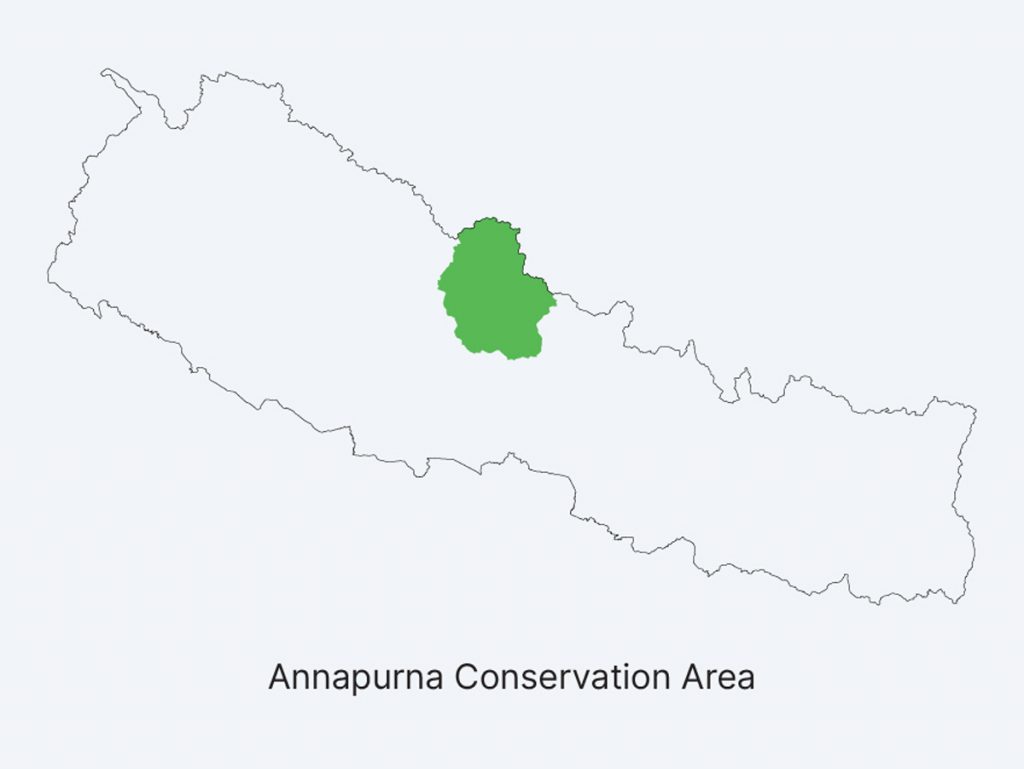
The conservation area encompasses the Manang, Mustang, Kaski, Myagdi, and Lamjung districts.
Overview of Annapurna Conservation Area
Geography and Biodiversity
The Annapurna Conservation Area is the biggest conservation area of Nepal covering 7,629 sq km in the north-central part of Nepal near the vibrant city of Pokhara.
It is home to several districts such as Lamjung, Manang, Mustang, and Kaski, and features a dramatic altitude range starting from 790 m and piercing the sky at an altitude of 8,091 m at the top of Annapurna I.
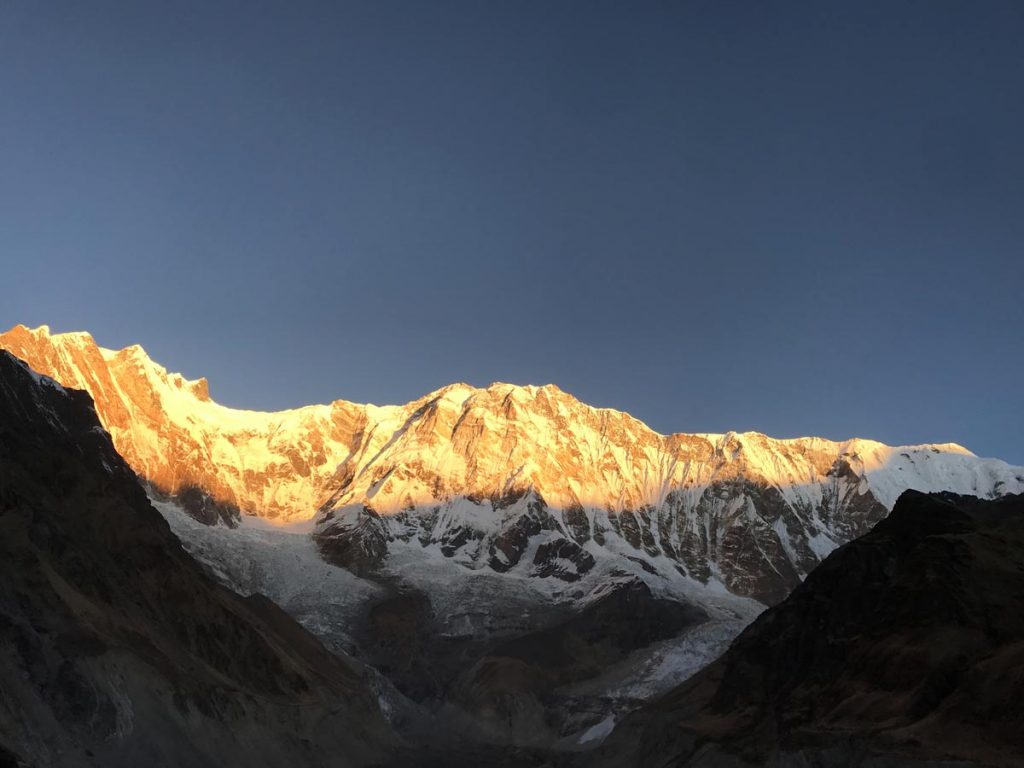
Within this altitude difference of 7,301 m, the region boasts incredible geographic diversity encompassing the majestic Annapurna range as well as the world’s deepest valley- Kali Gandaki Valley.
Established in 1992, this area is bordered by the dry alpine deserts of Mustang and Tibet in the north, Kali Gandaki River in the west, Marshyangdi Valley in the east, and Pokhara Valley in the south.
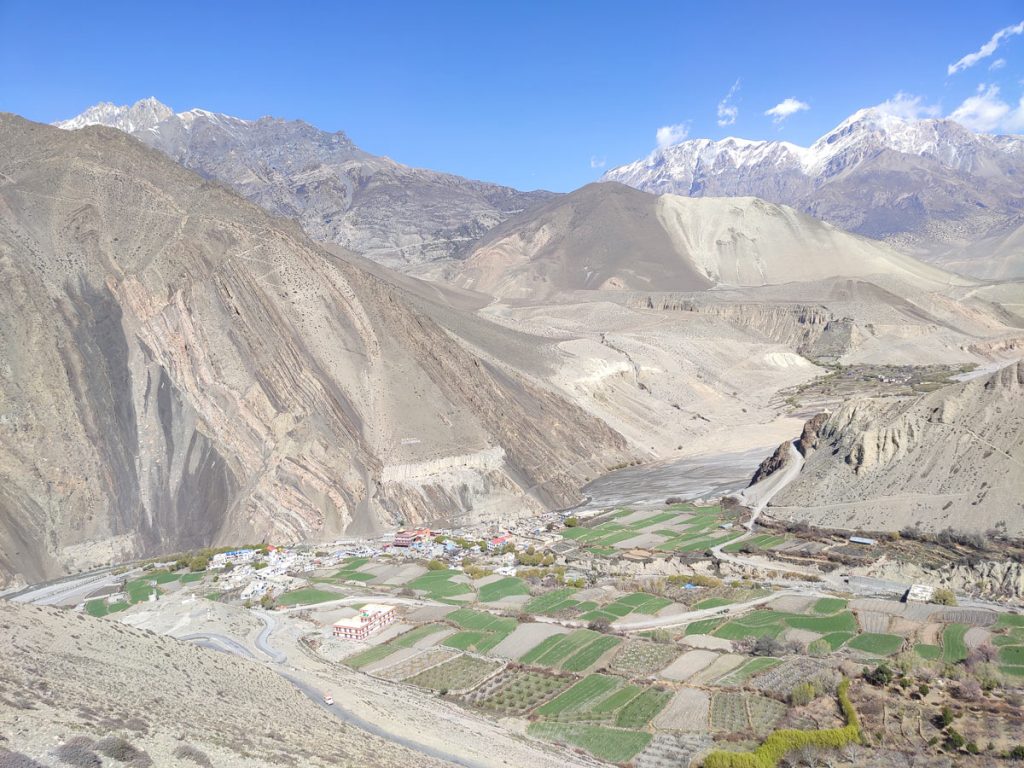
Annapurna Conservation Area features a unique topography including diverse landscapes from sub-tropical forests, gorges, alpine meadows, icy glaciers, and snowcapped towering Himalayan giants.
A catchment area for these rivers, Marshyangdi, Seti, and Kali Gandaki Rivers carve their way into the region while forming deep gorges and valleys and sustaining the lives of people in the region.
Housing the Annapurna Range, the Annapurna Conservation Area is home to several towering giants like Annapurna I (8,091 m), Annapurna II (7,937 m), Annapurna III (7,555 m), Dhaulagiri (8,167 m), as well as Machhapuchhre (6,993 m).
Flora and Fauna
The diverse landscapes of the Annapurna Conservation Area are a treasure trove of biodiversity as it houses an array of flora and fauna in its massive area.
This biological hotspot provides shelter to over 1,226 flowering plants including different species of rhododendrons, 102 mammals, 474 birds, 39 reptiles, and 22 amphibians.
The elusive snow leopard, the endangered musk deer, the Himalayan Tahr, and several other mammals inhabit the region in the vibrant company of beautiful birds like the Impeyan Pheasant, blood pheasant, and more.
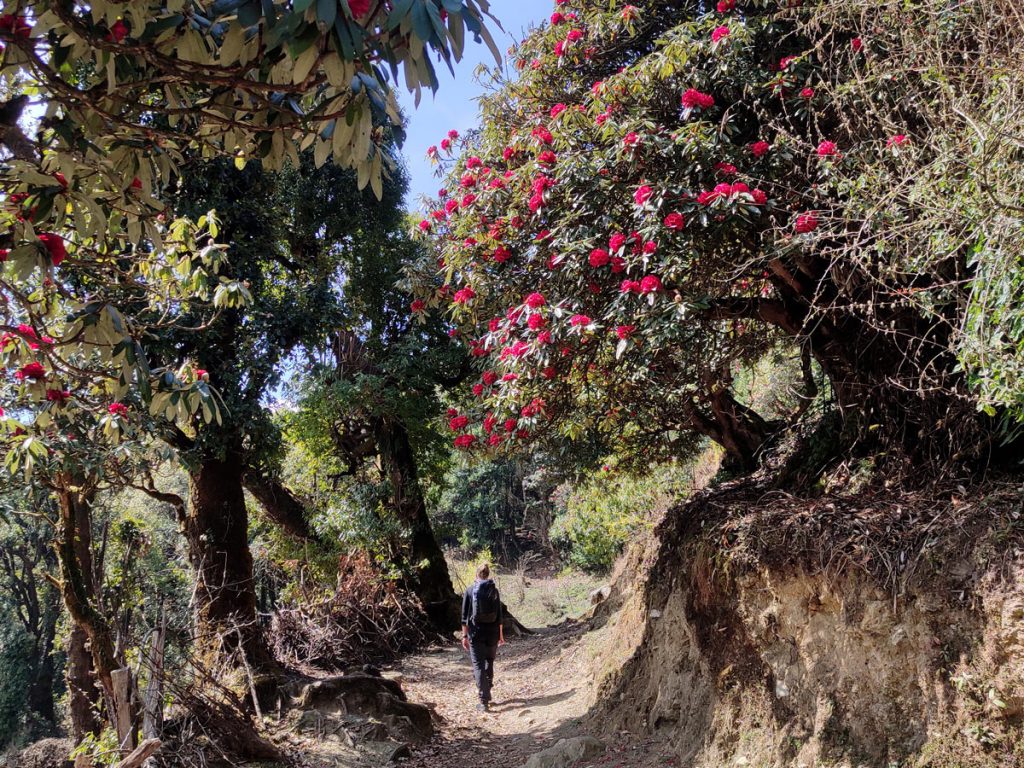
Besides this, several amphibians and reptiles reside in the diverse landscapes of the Annapurna Conservation Area like the elusive mountain pit viper and shy Himalayan Newt, adding to the exotic beauty of the region.
The hills and trekking trails are dotted with the vibrant hues of wildflowers and rhododendrons along with beautiful orchids blanketing the landscapes against the stunning backdrop of shining Himalayas.
Cultural Diversity
Often regarded as the melting pot of cultures, the Annapurna Conservation Area stands to its reputation with its cultural heritage which is rich beyond the natural allure of the peaks.
Different ethnic groups reside in the region in harmony like the Gurung, Thakali, Manangi, Loba, Chhetris, and Magars, presenting a tapestry of cultural and traditional values amidst the visitors.
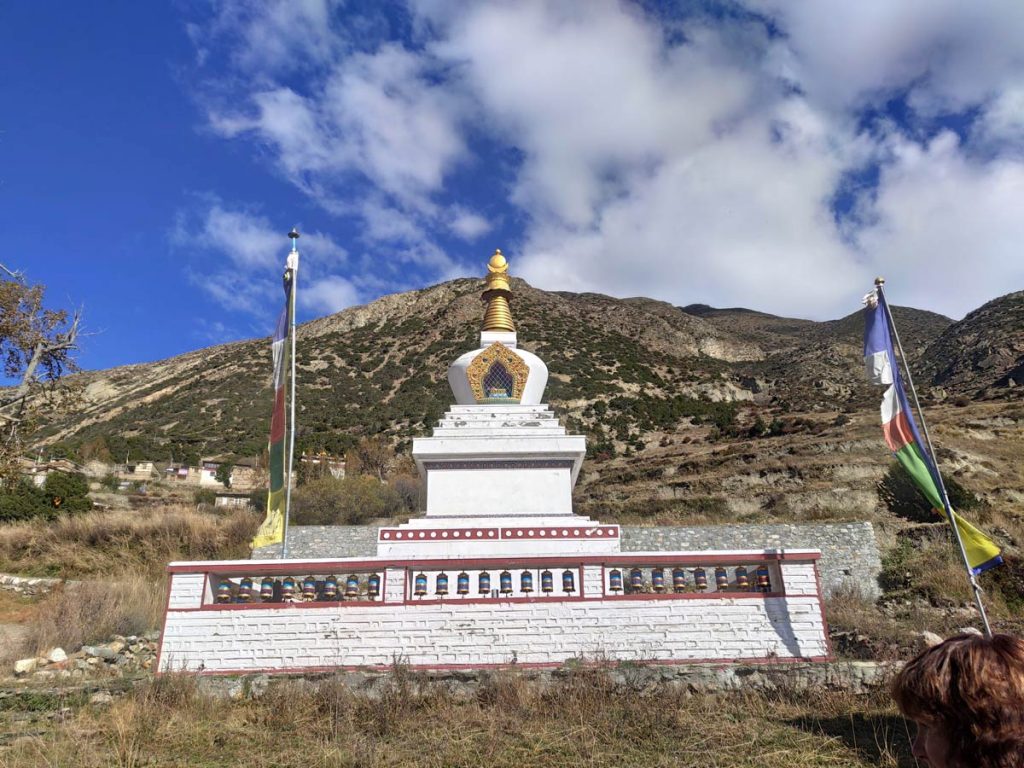
Be it the mouthwatering cuisine of the Thakalis or the Yak caravans and traditional clothing mastered by the Manangis, each cultural group residing here has its own traditions and way of living.
Therefore, this area experiences several festivals and customs like Yartung, Tiji,and Tamu Lhosar (Tibetan New Year), and are accompanied by a variety of traditional music and dances.
Buddhism with a hint of Tibetan influence is dominant in this area, especially at the higher altitudes with several religiously significant stops including Muktinath, and Kagbeni.
Major Attractions in Annapurna Conservation Area
Poonhill
Poonhill is a viewpoint in the Annapurna Conservation Area which is also considered as one of the best sunrise viewing points in Nepal.
Located at an elevation of 3,210 m, this hill station provides stunning views of sunrise over the Annapurna range including iconic peaks like Dhaulagiri and Machhapuchhre.
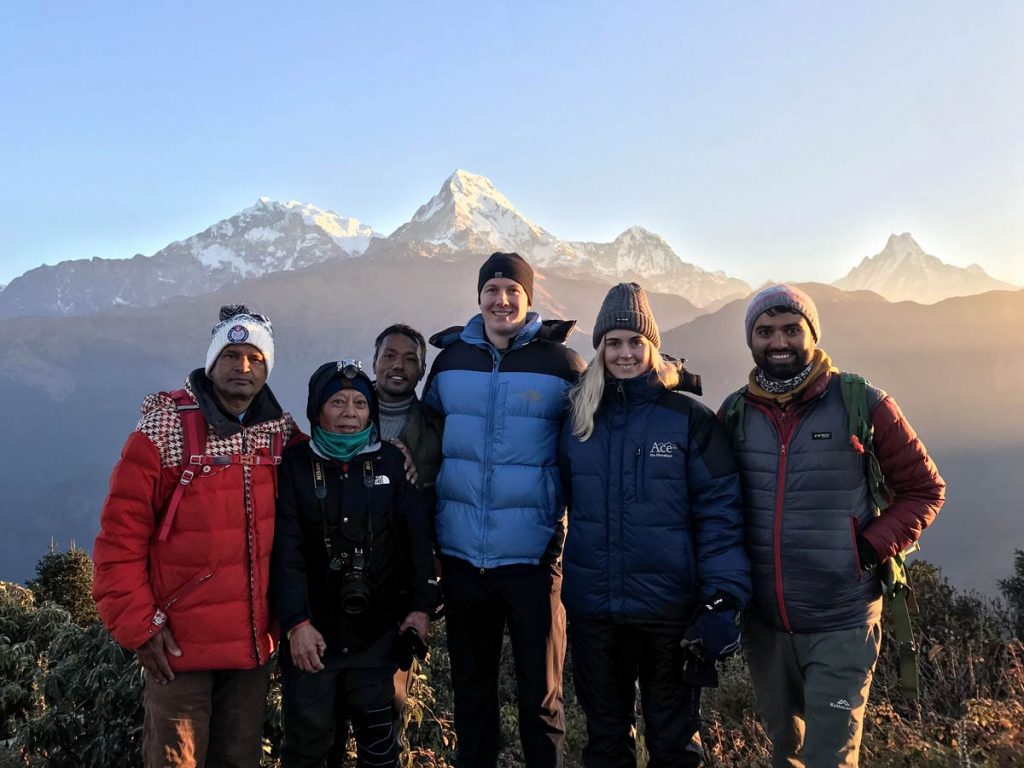
Witnessing the golden rays of the sun reflecting on the snowcapped peaks and painting them in the hues of orange is truly a sight to behold and it etches the picture-perfect moment in one’s memory forever.
Muktinath
A sacred pilgrimage site, the Muktinath Temple is one of the most revered religious places in Nepal. This place holds religious value for both Hindus and Buddhists.
This temple is perfect for people wanting a moment of spirituality and self-reflection amidst the Himalayas. It features a Hindu temple as well as a Buddhist Gompa.
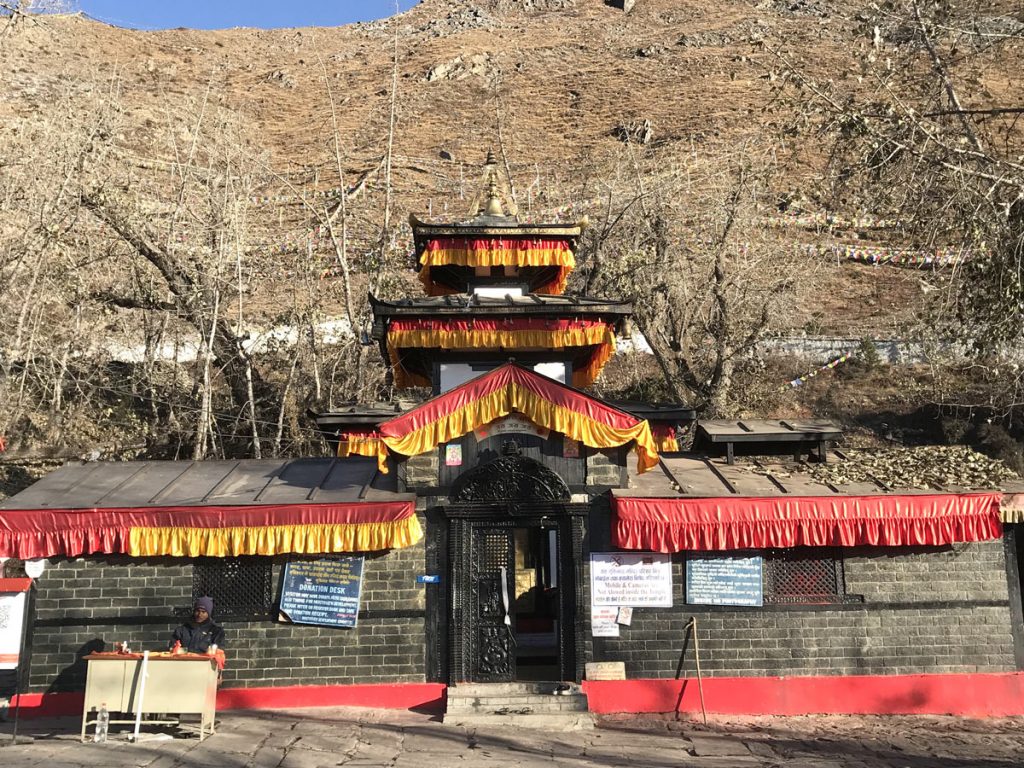
Located at 3,710 m at the base of Thorong La pass, this temple provides a stunning view of the surrounding peaks while giving a unique experience of tackling the high-altitude deserts of Mustang.
The temple is famous for its eternal flame and the 108 water sprouts are considered extremely holy. This place is dedicated to the Hindu deity Lord Vishnu and is also known as the ‘liberation area’.
Thorong La Pass
Known as the highest trekking pass in the world, the Thorong La pass lies at 5,416 meters and is a treacherous adventure for those wanting an adrenaline rush.
A part of the Annapurna Circuit trek, this pass pushes both the physical and mental endurance of the trekkers while also rewarding them with a rich experience along the diverse ecosystem of the Annapurna Conservation Area.
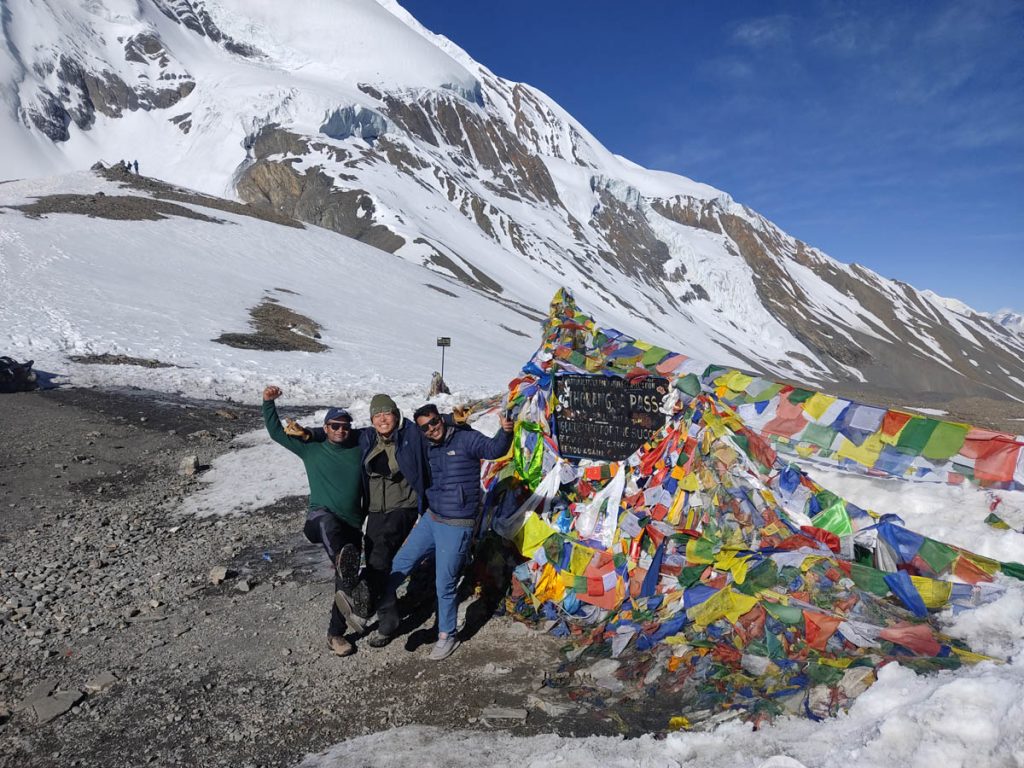
The pass is accessible only on foot and is said to be the highest point trekkers will ever reach.
Upper Mustang
Located in the rain shadow of the Himalayas, Upper Mustang is a unique attraction in the Mustang Valley. It features unique and diverse geology including the rare high-altitude semi-arid desert.
This region features trekking routes as well as mountain biking options. The Upper Mustang region is highly influenced by Buddhism and Tibetan cultures.
Close to the Tibet border, the region features barren deserts, wind-swept canyons, and stratified rock formations. It experiences very little rainfall throughout the year and is regarded as the ‘desert of Nepal’.
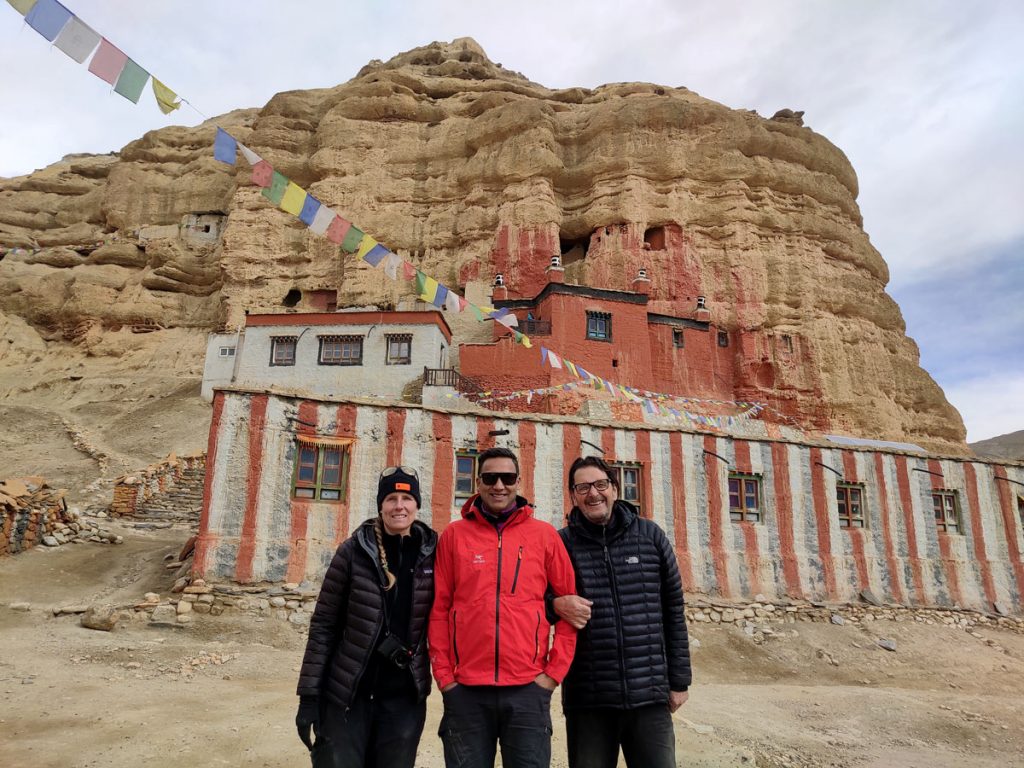
Upper Mustang is home to several monasteries dating centuries back like Thupchen Gompa, Choede Monastery, Luri Gumba, Ghar Gumba, Tsarang Monastery, Niphu Gompa, Garphu Gompa, and more.
Besides this, you can also explore the nearby ancient walled city of Lo-Manthang boasting traditional Tibetan architecture.
Annapurna Sanctuary
A breathtaking glacial basin in the Annapurna Conservation Area, it is an unmissable sight as the region is surrounded by a ring of mountains from the Annapurna range.
The feeling here is nothing short of experiencing a natural amphitheater as Himalayan giants surround you while you are accompanied by a variety of flora and fauna.
The region also houses glaciers like Annapurna Glacier and Gangapurna Glacier along with peaks like Annapurna I, Annapurna South, Annapurna III, Hiunchuli, Tilicho Peak, and Mardi Himal.
Mt. Machhapuchhre
The Annapurna Conservation Area is also home to the iconic Fishtail Peak, locally known as Machhapuchhre. The Machhapuchhre Base Camp is also a part of the Annapurna Base Camp trek.
Standing at 6,993 m, this peak is truly a sight to behold. However, it is prohibited for mountaineering expeditions as this is regarded as a holy peak by the Hindus.
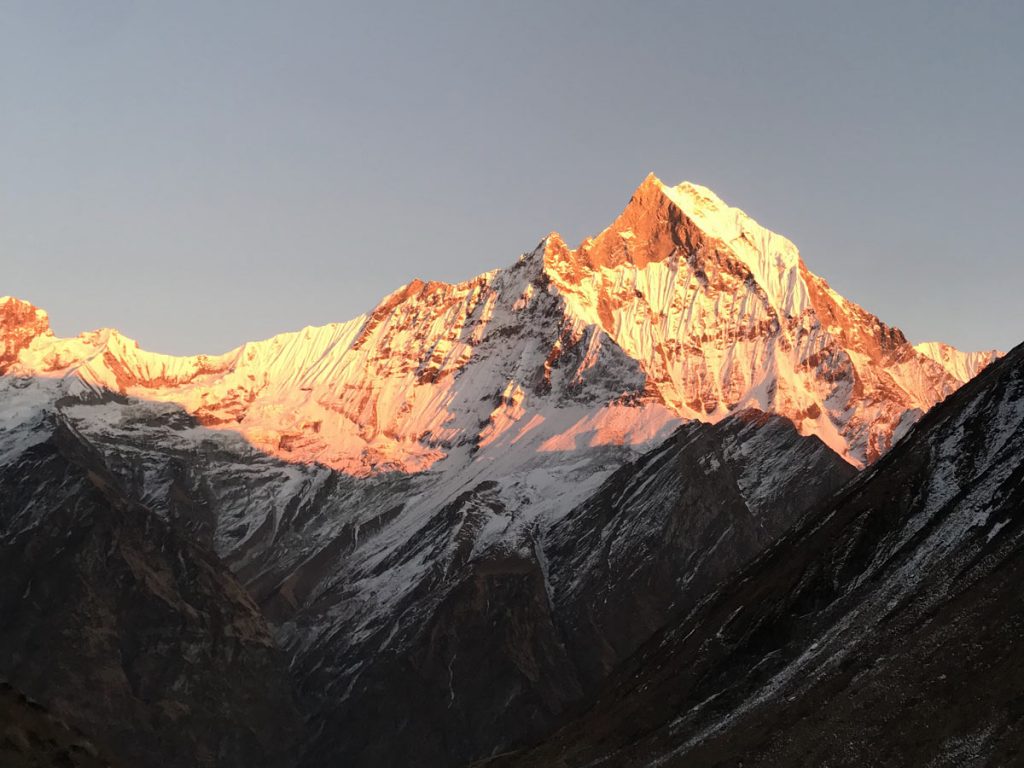
Having said that, you can still get a closer experience to the peak at the said base camp and enjoy its captivating views.
Tilicho Lake
Another highlight of the Annapurna Conservation Area is Tilicho Lake which is regarded as the highest-altitude lake in the world located at an elevation of 4,919 m.
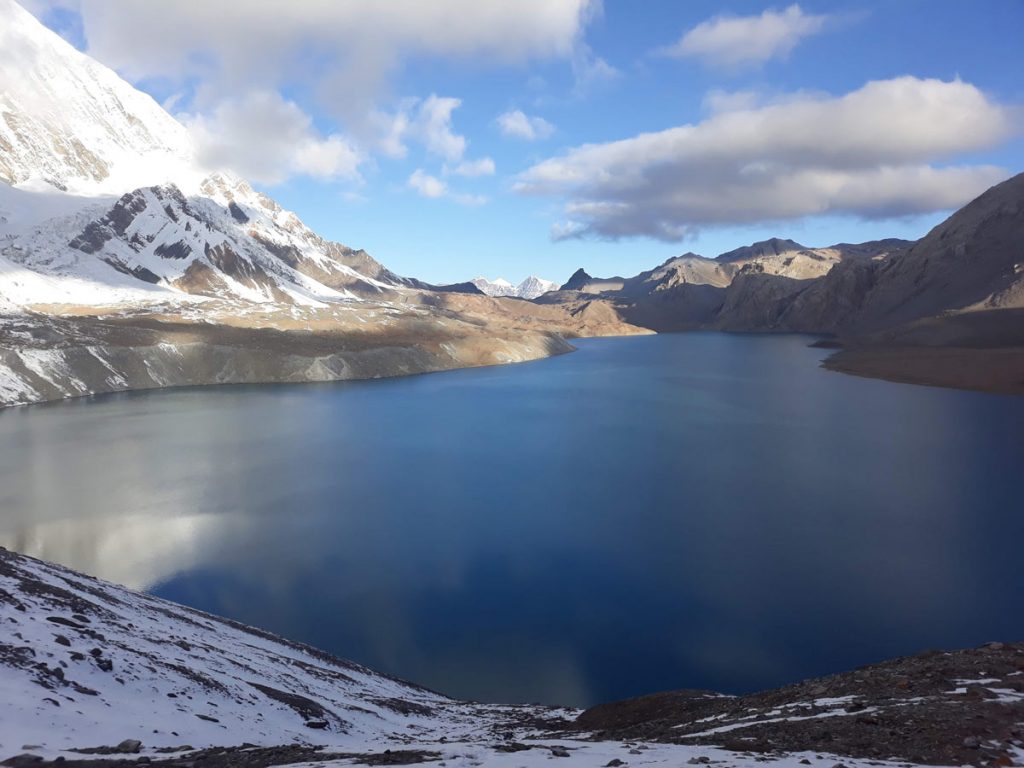
This glacial lake is a must-visit spot in the region as the crystal-clear reflection of the surrounding peaks in the water of the lake creates a picture-perfect vista for visitors.
Trekking Routes
The Annapurna Conservation Area is truly a sanctuary for the trekkers as it houses several treks including some of the most famous ones in the world providing options for newbies as well as seasoned trekkers.
The region offers some of the most iconic and breathtaking routes in the world ranging from leisurely walks to adrenaline-pumping challenges.
The Annapurna Circuit trek is the hero trek of this region. Considered one of the best in the world, this legendary trek takes you around the entire Annapurna massif.
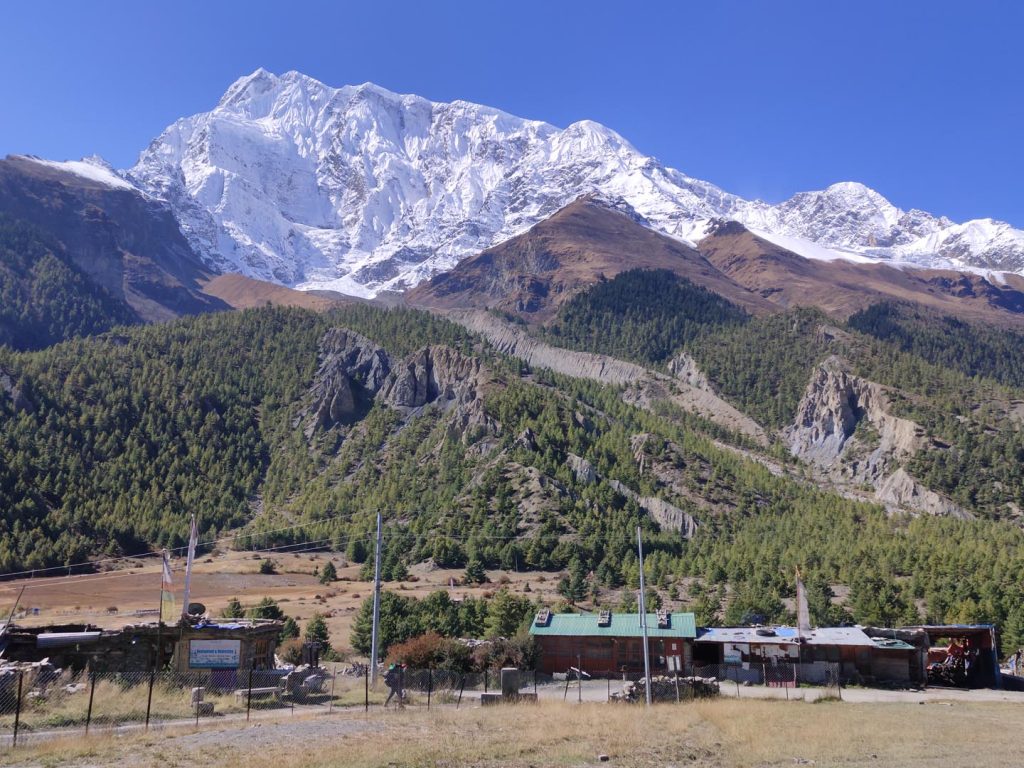
This trek allows you to completely immerse yourself in the scenic and cultural beauty of the Annapurna Conservation Area starting from a lower altitude and taking you to the 5,416 m altitude of Thorong La pass.
It is considered a challenging adventure and is completed within a timespan of 3 weeks in general. However, all the challenges become worth it as you get the stunning panoramas of the Himalayan ranges.
Another world-famous trekking route from this region, the Annapurna Base Camp trek offers a rather direct encounter with the Annapurna massif and takes you straight to the Annapurna Base Camp.
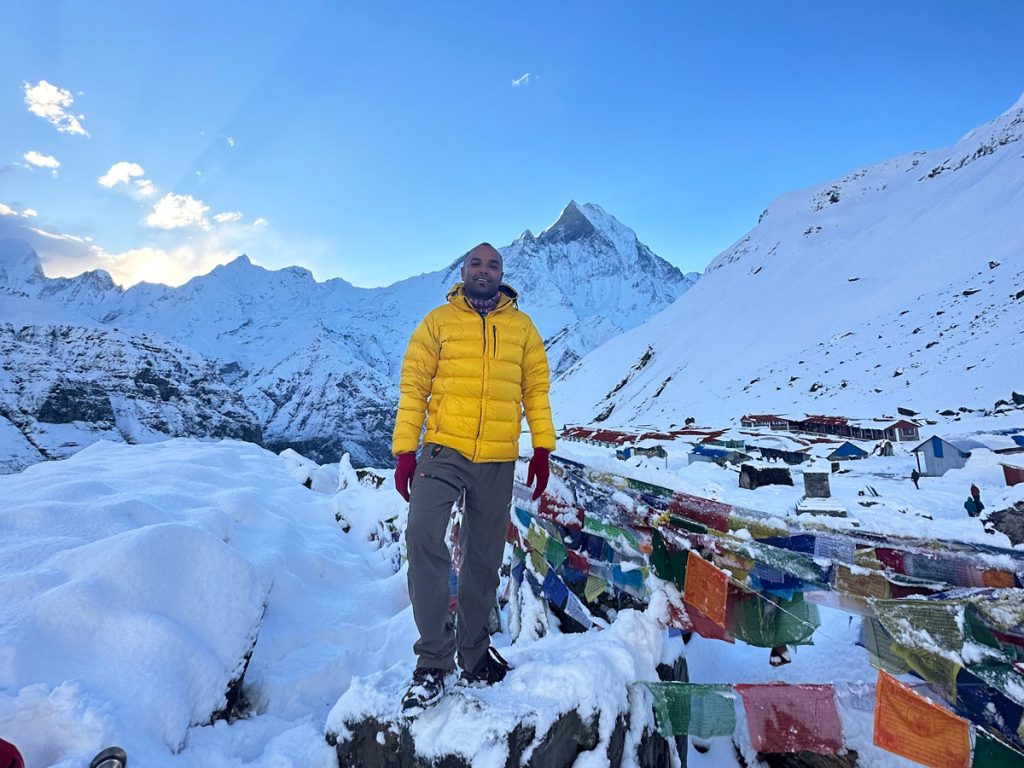
Going to the foot of Annapurna I, the journey takes the trekkers through several landscapes while experiencing the warm hospitality of locals. The Machhapuchhre Base Camp is also a part of this trek.
A relatively shorter adventure of the Ghorepani Poon Hill trek is equally enticing as it takes you to one of the best sunrise viewing points in Nepal at Poonhill presenting the Himalayas in all their glory with the orange hue of sunlight.
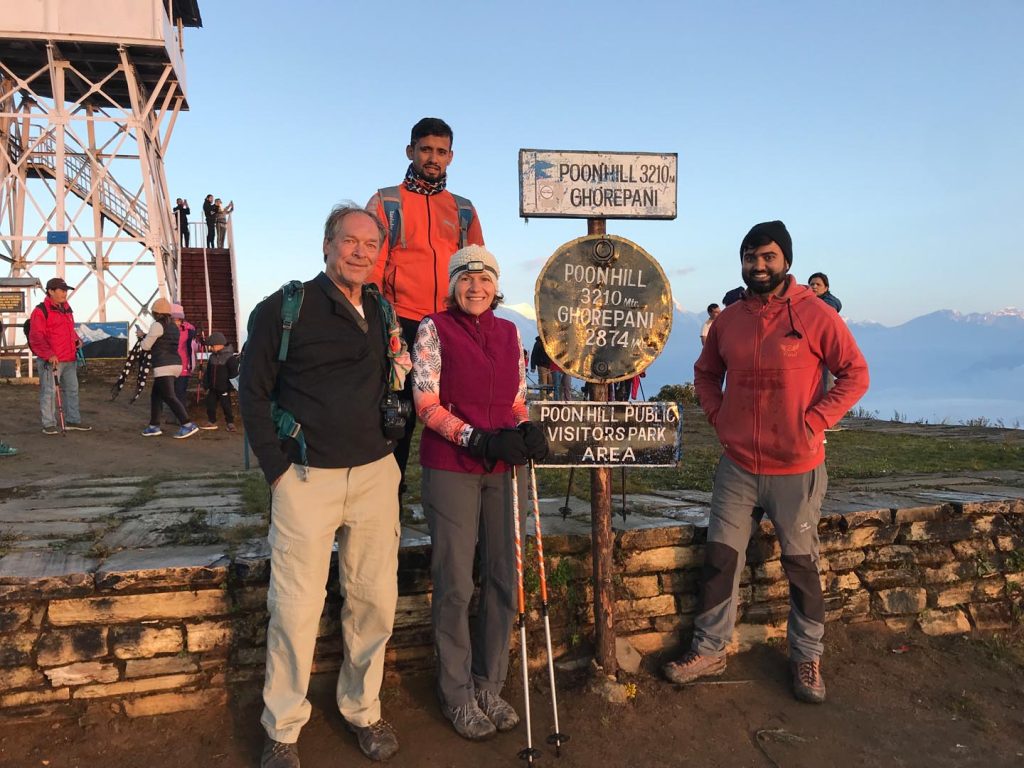
The Upper Mustang trek is a great option for trekkers wanting to explore the unique historical ‘walled city’ of Lo Manthang along with Himalayan adventures as this route encompasses several monasteries, sky caves, and unique art and architecture at the high-altitude Luri Gumba.
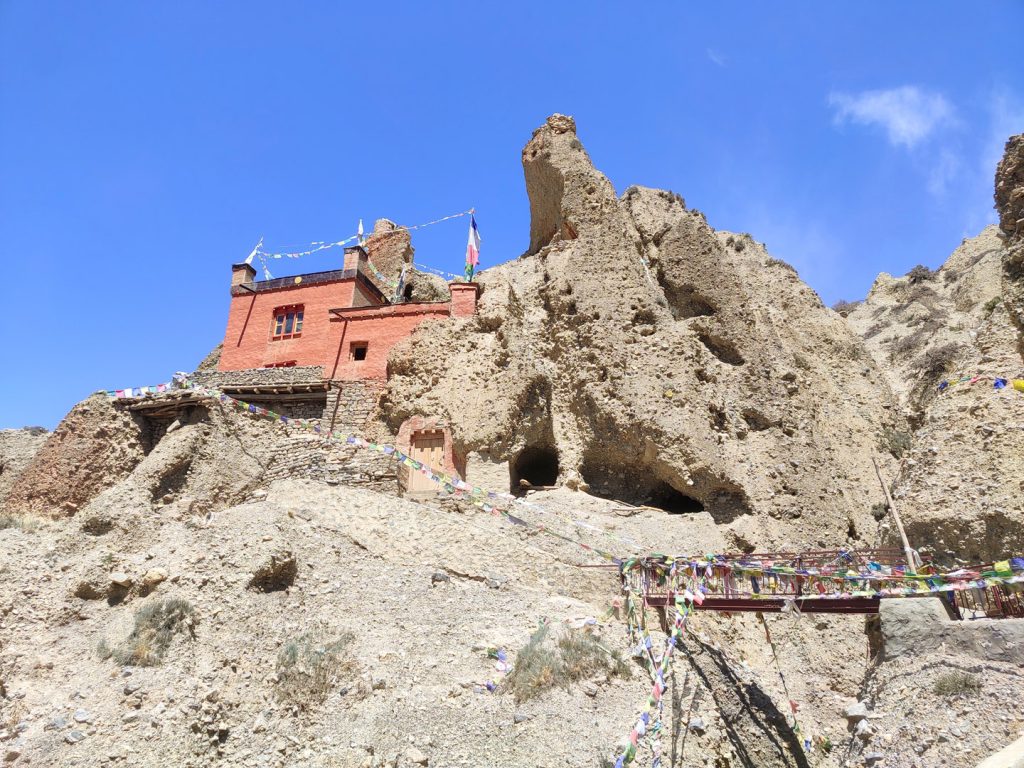
An unexplored hidden gem in the Annapurna region, the Mardi Himal trek is the perfect option for trekkers wanting to explore the allure of the Annapurna region without the massive trekkers traffic.
The relatively new Khopra Danda trek presents the Himalayan giants of the Annapurna region is a completely different perspective while providing a relatively easy option to experience the beauty of the Annapurna region.
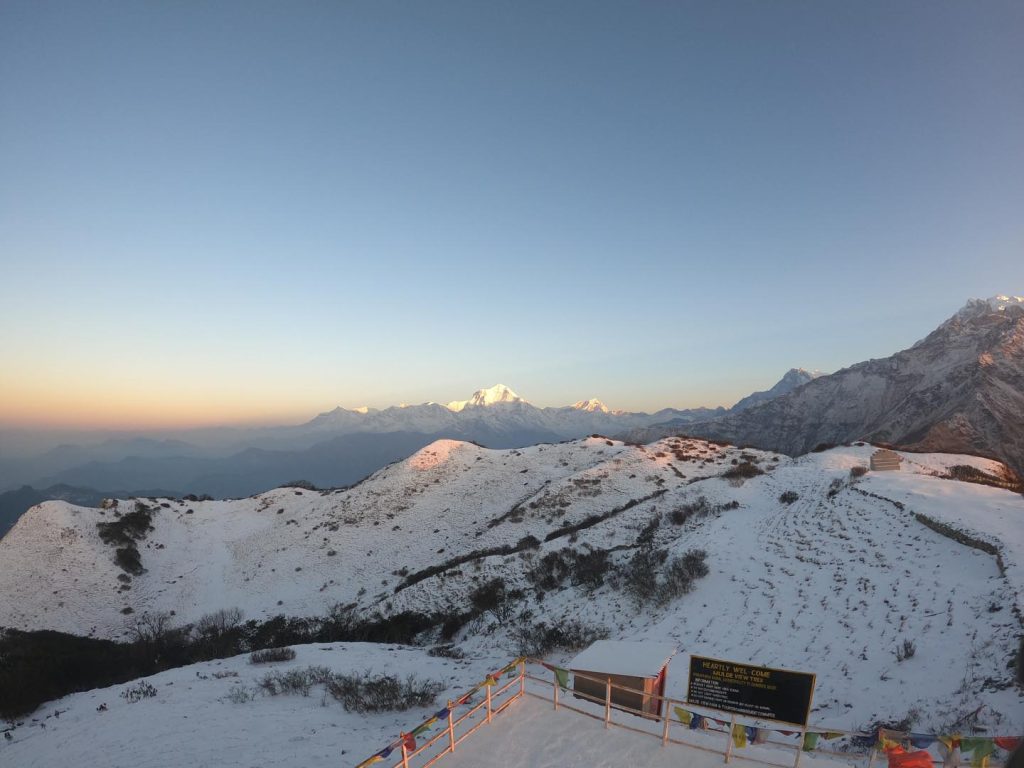
Combined trekking routes like Nar Phu Valley with Annapurna Circuit and Tilicho Lake Trek with Thorong La Pass are perfect for people wanting to make a detour to major attractions of the region during their trekking adventure.
Beyond Trekking
The Annapurna Conservation Area features several adventure activities beyond trekking like mountain biking, cultural sightseeing, helicopter sightseeing, as well as mountaineering expeditions.
While climbing Mt. Machhapuchhre is prohibited, mountaineering options like Pisang Peak climbing, Tent Peak Climbing and Annapurna Base Camp expeditions are highly popular in the region.
Besides this, one can also go on Annapurna Circuit Biking to experience a mountain biking adventure in the vibrant region. For those wanting to experience the unique high-altitude deserts, Upper Mustang Biking is also an exciting adventure.
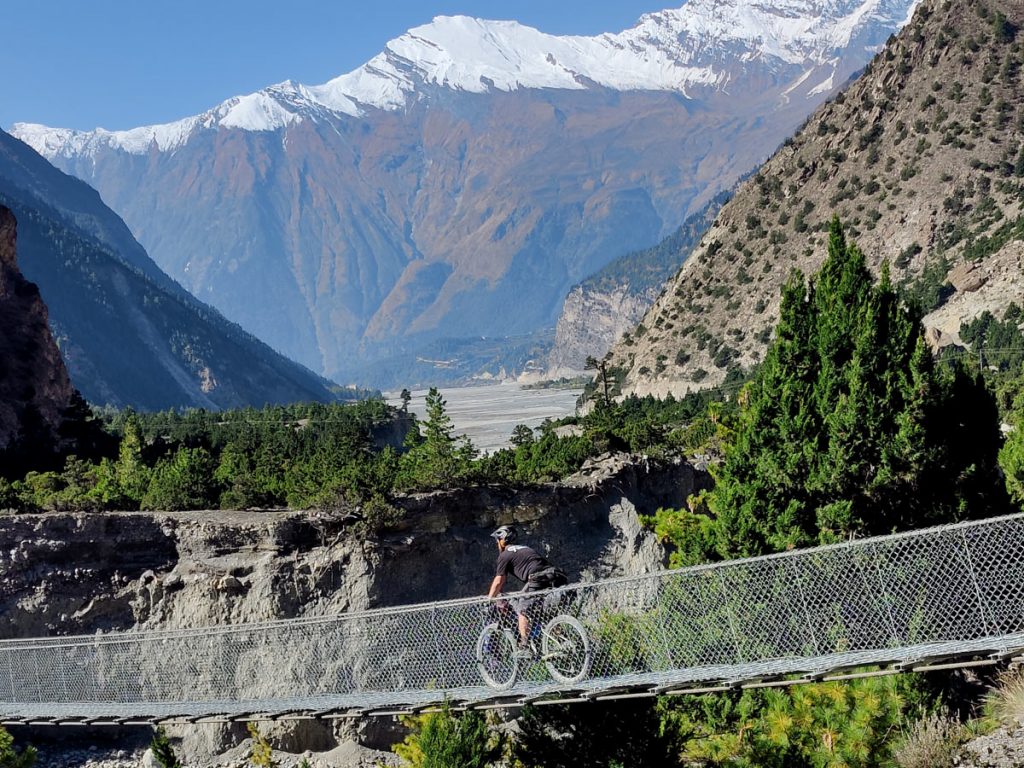
A combined helicopter tour of Pokhara and Annapurna region can also be taken up along with other numerous adventure activities prevalent in the region.
Planning your visit
Permits and Regulations
Being a conserved area of Nepal, the Annapurna Conservation Area is regulated by the government of Nepal as a part of the Annapurna Conservation Area Project.
It is a step towards protecting the flora and fauna of the region while ensuring responsible tourist activities. Therefore, entry is not allowed to people without certain permits.
For trekkers and non-trekkers alike, one must have these permits to enter and explore the region. The required permits are Trekker’s Information Management System (TIMS) permit and an ACAP (Annapurna Conservation Area Permit).
Visitors can get these permits in Kathmandu after paying a certain amount and they must be presented during several checkpoints along the Annapurna Conservation Area.
Packing Essentials
Although the Annapurna Conservation Area is well facilitated in terms of facilities like lodging, food, and other resources too, you should pack your bags thoroughly as you will be exploring some remote corners of the country.
As the region is a popular trekking hub, trekkers can refer to the guides and lists of items like the packing list for Annapurna Base Camp trek to get more details on what to pack for their adventure.
However, basic packing essentials include things like clothes matching the temperatures of the region, medicines, documents, good shoes, jackets, and a first aid box.
Once these things are ticked on your list, you can move to other essentials like toiletries, a good bag, some munchies for emergencies, power banks, and any health essentials that you have.
Sunglasses, sun protection, good books, and a camera can be a valuable addition to your packing list. Add a pair of gloves and a gaiter for extreme temperatures.
Keep in mind that trekkers have a more elaborate and detailed packing list including gear and clothing essentials.
Best time to visit Annapurna Conservation Area
The best times to visit the Annapurna Conservation Area are the months of spring (March to May) and autumn (September to November) due to several reasons.
These months feature clear skies and pleasant weather in the region while giving a clear and unobstructed view to visitors without having to shiver in the extreme temperature of the region.
Besides this, the flora and fauna are also highly active in the region during these seasons. Wildflowers like rhododendrons and other flora adorn the landscapes of the Annapurna Conservation Area making the journey worthwhile.
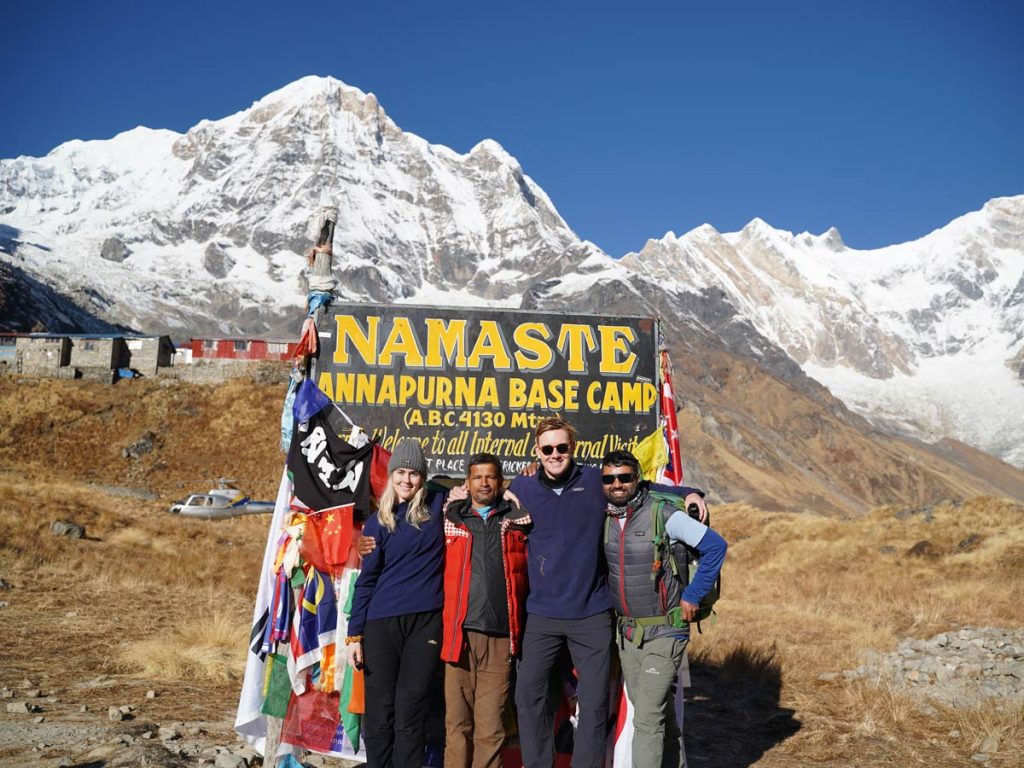
Also coinciding with peak trekking seasons in the country, the region experiences a huge amount of crowd during these seasons. So, if you want a quieter experience, winter can also be a good but challenging option.
Winters (December to February) in the Annapurna Conservation Area are quiet. However, they come with unbearable and extreme temperatures with high snowfall in the higher elevations.
While monsoon (July to August) in this region is also quiet, it is for a reason. The region experiences sudden and heavy rainfalls which makes the trails slippery and treacherous.
Exploring the Annapurna Conservation Area during this season can be highly risky and is not a practical option. Even if you are visiting the region, trekking is highly not advisable during this season.
If you are visiting the region to experience the joy of certain festivals like Tiji, it is best to know the dates of the festivals beforehand and plan your journey accordingly.
Additional Tips
- If you are a trekker, hire a trekking guide or get in touch with a local tour agency as solo trekking has been prohibited in Nepal.
- Embrace the joy of responsible tourism ensuring that your visit doesn’t have negative effects on the fragile ecosystem of the region.
- Expect the unexpected and embrace it too as weather conditions might change at any given time. So be thoroughly prepared for any challenge.
- Respect the local culture and try to indulge with the local communities to get a more authentic experience.
- If you are going towards a higher altitude, do not miss out on acclimatization days to prevent altitude sickness.
Conclusion
A place of breathtaking beauty and heartwarming cultures, exploring the Annapurna Conservation Area is truly a lifelong memorable experience with breathtaking vistas awaiting you at every turn of your journey.
Be it marveling at the sunrise from Poonhill or navigating the challenging trails, the adventure is worth it. So, are you ready to experience the magic of Annapurna Conservation Area?
